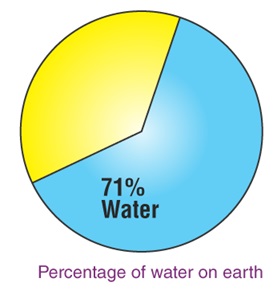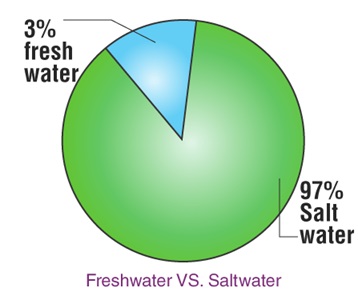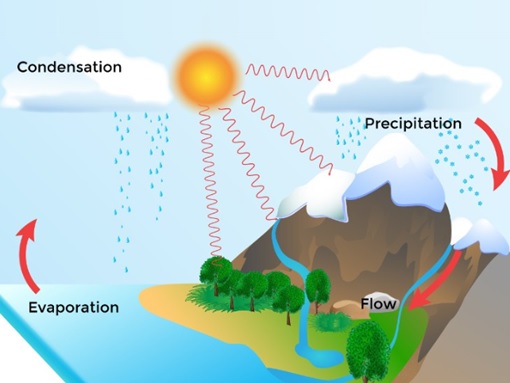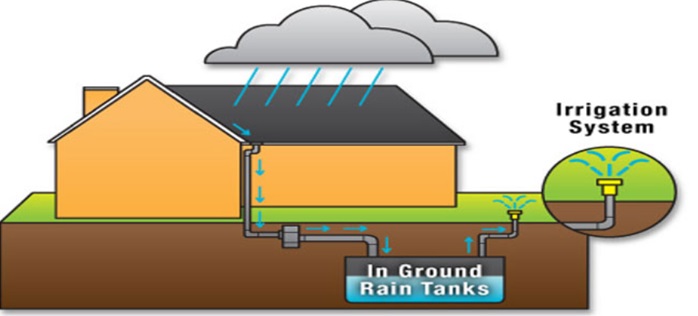CBSE Class 6 Science Notes Chapter 14 Water
CBSE Class 6 Science Notes Chapter 14 Water are given below. Our notes are designed by the subject experts and are as per the NCERT guidelines. These notes include all the important points of the chapter in detailed way, so you can refer to this whenever required. Study Path provides CBSE Class 6 Science Notes Chapter 14 that are easy to understand and also free downloadable PDF format, so students can practice it for their studies and get good marks in their examinations.
Water Class 6 Notes Science Chapter 14
Introduction
It is common knowledge that water is important on our Earth and without water, life as we know it would cease to exist. While Earth has an abundant reservoir of water, covering three-fourths of its surface, Freshwater is a mere 2.6% of the total water. Water is said to be a renewable resource but the rate at which humans and animals are using water, fresh water might be a scarce resource in the recent future. Our body is also made up of 70% water and we use water for a number of reasons from cooking to cleaning and of course drinking it. A lot of experts predict that the next World War will be fought over water!
What is Water?
Water is precious, fundamental and the most essential substances required for the existence of life on earth. Water is found naturally, abundantly on our planet earth. About two-thirds of the total earth’s surface is covered with water. It is a transparent, odourless and tasteless inorganic molecule composed of hydrogen and oxygen.
Uses of Water
We all use water for different purposes, which includes everyday household uses, including drinking, cooking, cleaning, washing, bathing for other domestic, irrigating, cultivating the crops and industrial requirements. Thus, water is required for many activities, therefore it is an essential element required for the continuity of life on the planet.
Sources of water
As mentioned above, about two-thirds of the total earth’s surface is covered with water, but unfortunately, only a small percentage (2 to 3 per cent) is suitable for human use. The other 99.7 per cent available are found in oceans, sea, groundwater, floating in the atmosphere and in icecaps. This water is not safe and is unsuitable for human consumption, as it consists excess salt, toxins and other impurities, which can lead to illness and other health disorders.
Rivers, ponds, lakes and groundwater are the different sources of water, which can be used for drinking, cooking and other human uses only after proper treatment like boiling, filtering, etc.
Origin of water
- The origin of the water is found out to be from a type of meteorite.
- The major sources of water for human use are lakes, rivers, ponds etc.
- The chemical composition of water on earth is the same as that of some meteorites.
Uses of water
Below are the different uses of water in various fields:
- Cleaning
- Drinking.
- Bathing.
- Washing.
- Irrigation.
- Gardening.
- Cooking food.
- Transportation.
- Manufacturing goods.
- For generating power.
- Production in industries.
- Recreational activities like swimming, water sports.
Freshwater
Freshwater is a naturally occurring water present on the earth’s surface in ponds, rivers. The major source of rainwater is precipitation in the atmosphere.
Distribution of Freshwater


71% of Earth is filled with water, out of this 3% is fresh water and 97% of water is in oceans and seas. Out of this 3% of freshwater, 30% is groundwater (not accessible), 69% are in the form glaciers, icebergs. (not accessible), out of the remaining 1% of water, only 0.006% is used by the people for several purposes like bathing, washing.
Potable water
The pure form of water, which does not contain any impurities or salts in it and can be used for drinking purposes is called potable water.
Water from oceans
Out of 71% of the water on earth, 97% is the water from oceans and seas. Water from oceans and seas contains dissolved salts in it, hence this water is called saltwater or saline water.
Water Cycle
The process of circulating or the continuous movement of water between water bodies like the ocean, rivers, ponds, lakes and land is called the water cycle. It is also also known as the hydrologic cycle or the hydrological cycle. In this process, the water on the earth changes into three different states of matter – solid, liquid and gas. The complete process of the water cycle involves the following process.
- Evaporation.
- Condensation.
- Precipitation.
Evaporation: Evaporation is the process of converting liquid or water into the gaseous form or vapour state.
Condensation: The process of converting vapour or gaseous form into its liquid form is called condensation.
Precipitation: When more water gets condensed in clouds or condensation of water vapour in the atmosphere results in precipitation. The precipitation can be in the form of rain, snow, hail.
Water cycle can be defined as the process through which water gets evaporated from open surfaces like oceans and seas, gets condensed as it rises in the cool atmosphere and ultimately pours down as rain (precipitation) back into oceans, lakes, rivers and ponds.

The flow of water towards the oceans
- Rainwater falls into rivers, lakes etc.
- The rain droplets fall into oceans, rivers, ponds, seas.
- Water from the rivers, lakes, ponds finally flow into the sea and ocean.
Transpiration
The process of evaporation of water from the surface of the leaves into the atmosphere is defined as the process of transpiration. In this manner, plants also contribute to the water cycle.
It is through the process of water cycle that we are able to make use of the ocean water. Ocean water is saline in nature and hence cannot be used directly. When it gets evaporated, it leaves behind the salts and forms clouds.
As the warm air from these surfaces rises into the cold air of the atmosphere, saturation and condensation occur to form tiny droplets of water which result in cloud formation.
These clouds then lead to rainfall and snow which deposit in lakes, wells and ponds is then used by us to satisfy our needs. Apart of this rainwater gets absorbed by the soil, some of it gets evaporated while the rest seeps in the ground and becomes another source of water for us in the form of groundwater. Handpumps, wells and even lakes draw water from groundwater. The water cycle is a continuous process.
Flood
- Rainfall brings about life but excess rainfall leads to an increase in water level in water bodies like rivers, ponds.
- Adverse effects of floods:
- Flood causes damages to human life, crops, domestic animals and animals living in the water.
- This excess water may spread over large areas causing floods.
Drought
- Inadequate rainfall leads to a decrease in groundwater level which makes soil dry. This condition is called drought.
- At the time of drought, it is difficult to get food and water.
Ground Water
The water present underground or beneath the earth’s surface in spaces of soil and rocks are called groundwater.
Water level
Level of water or it is the height reached by the water in lakes, ponds, storage tanks, dams.
Infiltration
The process of water seeping into the soil after falling onto the surface of the ground is called infiltration.
Aquifers
An aquifer is the underground layer of permeable rock which contains water that has seeped in from the surface.
Conservation of water
There are a number of reasons why water conservation needs to be a priority for everyone. Here are some of them:
- Mostly all water is in the oceans in saline form and can’t be used directly
- While the total water on Earth does not change, but the water available for us to use diminishes with overuse
- When the groundwater goes below drastically, it cannot be accessed anymore
- Water is required in industries and for production of food
- The population growth is exponential but the water sources are only depleting
Rainwater Harvesting
Rainwater does not always fall on soil or water sources; in fact, much of it falls on rooftops of houses and concrete roads and thus does not become a part of groundwater. Hence, a very important method has been devised to harvest rainwater so that it can be stored for future use:
Rooftop Rainwater Harvesting – In this method, rainwater that falls on rooftops is allowed to pass in a storage tank through pipes. This water might be dirty and hence not fit for direct use; hence it can be allowed to seep directly into the ground with the help of pipes.

Revision Notes for CBSE Class 6 Science Chapter 14 – Free PDF Download
Our Class 6 Revision Notes will provide a quick glimpse of the chapter and improve the learning experience. We have made these revision notes keeping the convenience of students in mind so that it proves more effective. You can easily read these Class 6 notes just by clicking on the chapter names provided above.